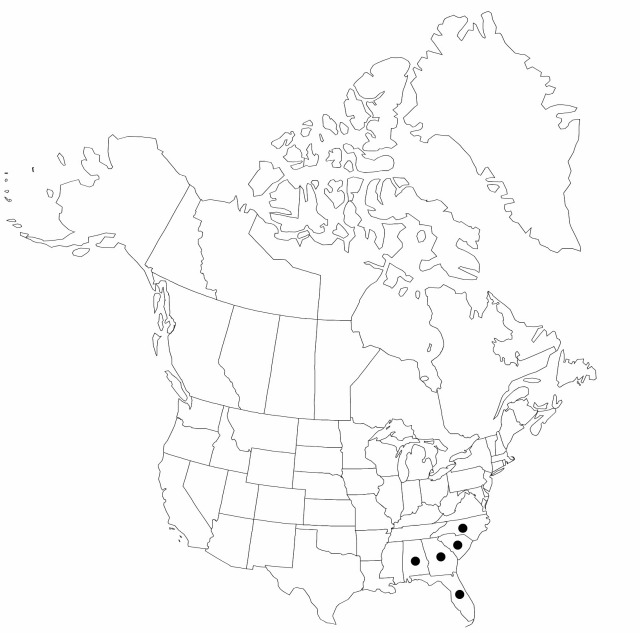Carex elliottii
Ann. Lyceum Nat. Hist. New York 1: 357. 1825.
Plants cespitose; rhizomes short. Culms trigonous in cross-section, 25–75 cm, scabrous distally. Leaves: basal sheaths reddish purple; ligules wider than long; blades dark green, flat to W-shaped, widest leaves 1.5–4.5 mm wide, glabrous. Inflorescences 1.7–10 (–15.5) cm; proximal bract 7–24 cm, much exceeding inflorescence; proximal 1–3 spikes pistillate erect, ca. 3–20-flowered, globose or short-ovoid; terminal 1 (–2) spikes staminate. Pistillate scales ovate, 2.8–4.2 × 2–2.6 mm, shorter than perigynia, margins entire, apex obtuse to acute, awnless. Perigynia ascending to spreading, the proximal reflexed, often green or straw colored, strongly 7–11-veined, veins running into beak, narrowly ovate, 5.6–8.8 × 1.6–2.7 mm, apex tapered; beak 1.4–3 (–4.5) mm, bidentulate, smooth, teeth straight, 0.3–1 mm. Stigmas 3. Achenes brown, symmetric, not indented, trigonous, smooth.
Phenology: Fruiting Apr–May.
Habitat: Acidic soil in swamp forests and forest openings, open seeps, sandy and peaty pond shores, uncommon and local
Elevation: 0–200 m
Distribution

Ala., Fla., Ga., N.C., S.C.
Discussion
Selected References
None.
Lower Taxa
"shortened" is not a number.
